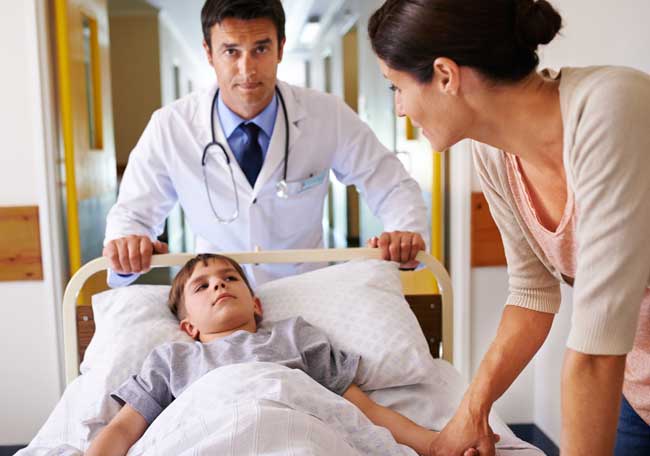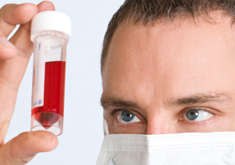Expansión de volumen en el síndrome urémico hemolítico

1. Noris M, Remuzzi G. Hemolytic uremic syndrome. J Am Soc Nephrol. 2005; 16(4):1035–1050
2. Oakes RS, Siegler RL, McReynolds MA, Pysher T, Pavia AT. Predictors of fatality in postdiarrheal hemolytic uremic syndrome. Pediatrics. 2006; 117(5):1656–1662
3. Loos S, Ahlenstiel T, Kranz B, et al. An outbreak of Shiga toxin–producing Escherichia coli O104:H4 hemolytic uremic syndrome in Germany: presentation and short-term outcome in children. Clin Infect Dis. 2012; 55(6):753–759
4. Frank C, Werber D, Cramer JP, et al; HUS Investigation Team. Epidemic profi le of Shiga-toxinproducing Escherichia coli O104:H4 outbreak in Germany. N Engl J Med. 2011; 365(19):1771–1780
5. Griffi n PM, Tauxe RV. The epidemiology of infections caused by Escherichia coli O157:H7, other enterohemorrhagic E. coli, and the associated hemolytic uremic syndrome. Epidemiol Rev. 1991; 13:60–98
6. Chandler WL, Jelacic S, Boster DR, et al. Prothrombotic coagulation abnormalities preceding the
hemolytic–uremic syndrome. N Engl J Med. 2002; 346(1):23–32
7. Wong CS, Jelacic S, Habeeb RL, Watkins SL, Tarr PI. The risk of the hemolytic–uremic syndrome after antibiotic treatment of Escherichia coli O157:H7 infections. N Engl J Med. 2000; 342(26):1930–1936
8. Loirat C, Frémeaux-Bacchi V. Atypical hemolytic uremic syndrome. Orphanet J Rare Dis. 2011; 6:60
9. Nürnberger J, Philipp T, Witzke O, et al. Eculizumab for atypical hemolytic–uremic syndrome. N Engl J Med. 2009; 360(5):542–544
10. Geerdink LM, Westra D, van Wijk JA, et al. Atypical hemolytic uremic syndrome in children: complement mutations and clinical characteristics. Pediatr Nephrol. 2012; 27(8):1283–1291
11. Ardissino G, Tel F, Testa S, et al. Skin involvement in atypical hemolytic uremic syndrome. Am J Kidney Dis. 2014; 63(4):652–655
12. Scheiring J, Andreoli SP, Zimmerhackl LB. Treatment and outcome of Shigatoxin- associated hemolytic uremic syndrome (HUS). Pediatr Nephrol. 2008; 23(10):1749–1760
13. Rooney JC, Anderson RM, Hopkins IJ. Clinical and pathological aspects of central nervous system involvement in the haemolytic uraemic syndrome. Aust Paediatr J. 1971; 7(1):28–33
14. Bale JF Jr, Brasher C, Siegler RL. CNS manifestations of the hemolytic– uremic syndrome. Relationship to metabolic alterations and prognosis. Am J Dis Child. 1980; 134(9):869–872
15. Tarr PI, Gordon CA, Chandler WL. Shiga-toxin-producing Escherichia coli and haemolytic uraemic syndrome. Lancet. 2005; 365(9464):1073–1086 [Review]
16. Garg AX, Suri RS, Barrowman N, et al. Long-term renal prognosis of diarrhea-associated hemolytic uremic syndrome: a systematic review, metaanalysis, and meta-regression. JAMA. 2003; 290(10):1360–1370 [Review]
17. Iijima K, Kamioka I, Nozu K. Management of diarrhea-associated hemolytic uremic syndrome in children. Clin Exp Nephrol. 2008; 12(1):16–19
18. Wong CS, Mooney JC, Brandt JR, et al. Risk factors for the hemolytic uremic syndrome in children infected with Escherichia coli O157:H7: a multivariable analysis. Clin Infect Dis. 2012; 55(1):33–41
19. Smith KE, Wilker PR, Reiter PL, Hedican EB, Bender JB, Hedberg CW. Antibiotic treatment of Escherichia coli O157 infection and the risk of hemolytic uremic syndrome, Minnesota. Pediatr
Infect Dis J. 2012; 31(1):37–41
20. Ikeda K, Ida O, Kimoto K, Takatorige T, Nakanishi N, Tatara K. Effect of early fosfomycin treatment on prevention of hemolytic uremic syndrome accompanying Escherichia coli O157:H7 infection. Clin Nephrol. 1999; 52(6):357–362
21. Lapeyraque AL, Malina M, Fremeaux- Bacchi V, et al. Eculizumab in severe Shiga-toxin-associated HUS. N Engl J Med. 2011; 364(26):2561–2563
22. Kielstein JT, Beutel G, Fleig S, et al; Collaborators of the DGfN STEC-HUS Registry. Best supportive care and therapeutic plasma exchange with or without eculizumab in Shiga-toxin producing E. coli O104:H4 induced haemolytic–uraemic syndrome: an analysis of the German STEC-HUS registry. Nephrol Dial Transplant. 2012; 27(10):3807–3815
23. Ake JA, Jelacic S, Ciol MA, et al. Relative nephroprotection during Escherichia coli O157:H7 infections: association with intravenous volume expansion. Pediatrics. 2005; 115(6). Available at: www. pediatrics. org/ cgi/ content/ full/115/ 6/ e673
24. Bell BP, Griffi n PM, Lozano P, Christie DL, Kobayashi JM, Tarr PI. Predictors of hemolytic uremic syndrome in children during a large outbreak of Escherichia coli O157:H7 infections. Pediatrics. 1997; 100(1). Available at: www. pediatrics. org/ cgi/ content/ full/100/ 1/ E12
25. Ardissino G, Daccò V, Testa S, et al. Hemoconcentration: a major risk factor for neurological involvement in hemolytic uremic syndrome. Pediatr Nephrol. 2015; 30(2):345–352
26. Balestracci A, Martin SM, Toledo I, Alvarado C, Wainsztein RE. Dehydration at admission increased the need for dialysis in hemolytic uremic syndrome children. Pediatr Nephrol. 2012; 27(8):1407–1410
27. Ardissino G, Possenti I, Salardi S, et al. Co-infection in children with bloody diarrhea caused by Shiga toxin–producing Escherichia coli: data of the North Italian HUS Network. J Pediatr Gastroenterol Nutr. 2014; 59(2):218–220
28. Kidney Disease: Improving Global Outcomes (KDIGO) CKD Work Group. KDIGO 2012 clinical practice guideline for the evaluation and management of chronic kidney disease. Kidney Int Suppl. 2013; 3(1):1–150
29. Schwartz GJ, Brion LP, Spitzer A. The use of plasma creatinine concentration for estimating glomerular filtration rate in infants, children, and adolescents. Pediatr Clin North Am. 1987; 34(3):571–590
30. Brigotti M, Tazzari PL, Ravanelli E, et al. Clinical relevance of Shiga toxin concentrations in the blood of patients with hemolytic uremic syndrome. Pediatr Infect Dis J. 2011; 30(6): 486–490
31. Rothman KJ, Greenland S, Lash TL. Modern Epidemiology. 3rd ed. Philadelphia, PA: Lippincott Williams & Wilkins; 2008
32. Schwartz GJ, Brion LP, Spitzer A. The use of plasma creatinine concentration for estimating glomerular filtration rate in infants, children, and adolescents. Pediatr Clin North Am. 1987; 34(3):571–590
33. Ardissino G, Possenti I, Tel F, Testa S, Paglialonga F. Time to change the definition of hemolytic uremic syndrome. Eur J Intern Med. 2014; 25(2):e29
34. Brigotti M, Tazzari PL, Ravanelli E, et al. Clinical relevance of shiga toxin concentrations in the blood of patients with hemolytic uremic syndrome. Pediatr Infect Dis J. 2011; 30(6): 486–490
35. Rothman KJ, Greenland S, Lash TL. Modern epidemiology. Third Edition. Philadelphia: Lippincott Williams & Wilkins, 2008
Comentarios
Para ver los comentarios de sus colegas o para expresar su opinión debe ingresar con su cuenta de IntraMed.










